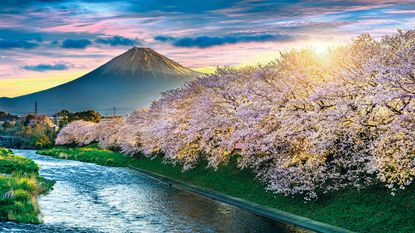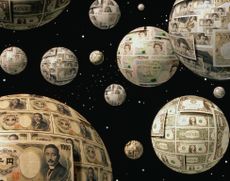Japanese stocks reach a 30-year high
Japan’s Nikkei 225 stockmarket index has broken through the 30,000-point level for the first time since 1990.

After several decades of “false dawns” the sun is finally rising on Japanese shares, says Ian Cowie on Interactive Investor. The Nikkei 225 index has broken through the 30,000-point level for the first time since 1990. Roaring Japanese markets had dominated financial headlines for much of the 1980s. When “the music stopped” few could have predicted that it would be such a long climb back. Sadly, “quite a few long-term investors in the world’s third-largest economy” didn’t live to see this day.
A protracted post-bubble hangover
The “lost decades” after the stockmarket bubble’s implosion have turned Japanese equities into the “red-headed stepchild of global asset allocation”, says Udith Sikand for Gavekal Research. There have been moments of hope: foreign investors poured $240bn into the local market after former prime minister Shinzo Abe’s second term began in 2012. But they soon became disillusioned, withdrawing all of those funds by the time his premiership ended last summer. They shouldn’t have: corporate reforms under Abe have led to “structural improvements in Japan Inc.’s profitability”.
Don’t let the Nikkei fanfare distract from Japan’s economic problems, says The Japan Times. They range from “stunted” productivity to an overdependence on “old economy” industries. The latest rally may not have much further to run. The market may have broken through the 30,000 mark, but it remains well short of 38,957, the all-time high it reached in 1989. “Only in Japan” would analysts say things had gone too far when the market is trading “where it was 30 years ago”, Nicholas Smith of CLSA told Eustance Huang on CNBC. Few foreign investors have noticed, but local shares have been performing strongly for a while: the Topix stock benchmark has gained 125% since late 2012, outperforming many other major markets. The Nikkei 225 has soared by more than 10% since 1 January, compared with a 3.4% gain in the pan-European Stoxx 600 and a 4.2% rise on the S&P 500.
Subscribe to MoneyWeek
Subscribe to MoneyWeek today and get your first six magazine issues absolutely FREE

Sign up to Money Morning
Don't miss the latest investment and personal finances news, market analysis, plus money-saving tips with our free twice-daily newsletter
Don't miss the latest investment and personal finances news, market analysis, plus money-saving tips with our free twice-daily newsletter
The Nikkei exorcises its demons
While 30,000 may be an arbitrary number, the “historic resonance of 1990 is powerful”, says Leo Lewis in the Financial Times. Japanese stocks have long been held back by a folk memory of the “deranged…bubble era”. In the years since, local investors could be expected to sell whenever shares rallied too much for fear of being burned again. The fact that the Nikkei has finally broken above 30,000 and stayed there suggests it is no longer overshadowed by its “manic alter-ego of 1989”.
The world has changed immensely in the three decades since the Nikkei was last at 30,000, says Graham Smith on fidelity.co.uk. Japan was then considered America’s “number-one” challenger; Chinese markets were “well off the radar for most investors”. Once eye-watering valuations have also come down, from as high as 75 times earnings in the early 1990s to 25 today – “a small discount” to global peers. The market’s stable of carmakers, electronics firms and banks is well placed to enjoy a profit surge as global recovery takes hold. “The stars seem to be aligning for Japan.”
-
 Stop inheritance tax perk on pensions, says IFS
Stop inheritance tax perk on pensions, says IFSThe government could raise billions of pounds in revenue by closing inheritance tax loopholes, such as on pensions and AIM shares. Is your pension at risk?
By Ruth Emery Published
-
 Revealed: Best buy-to-let property hotspots in the UK
Revealed: Best buy-to-let property hotspots in the UKLooking for the best buy-to-let property locations in the UK? We reveal the top 10 postcodes with the strongest rental returns
By Oojal Dhanjal Published
-
 AstraZeneca CEO’s £1.8mn pay rise approved despite shareholder opposition
AstraZeneca CEO’s £1.8mn pay rise approved despite shareholder oppositionAstraZeneca hiked its dividend to persuade shareholders to accept CEO Pascal Soriot’s pay rise. Is he worth his salary?
By Dr Matthew Partridge Published
-
 Adidas, Nike or Jordans - could collectable trainers make you rich?
Adidas, Nike or Jordans - could collectable trainers make you rich?The right pair of trainers can fetch six figures. Here's how you can start collecting vintage Adidas, Nike or Jordans now
By Chris Carter Published
-
 The industry at the heart of global technology
The industry at the heart of global technologyThe semiconductor industry powers key trends such as artificial intelligence, says Rupert Hargreaves
By Rupert Hargreaves Published
-
 Three emerging Asian markets to invest in
Three emerging Asian markets to invest inProfessional investor Chetan Sehgal of Templeton Emerging Markets Investment Trust tells us where he’d put his money
By Chetan Sehgal Published
-
 What to consider before investing in small-cap indexes
What to consider before investing in small-cap indexesSmall-cap index trackers show why your choice of benchmark can make a large difference to long-term returns
By Cris Sholto Heaton Published
-
 Why space investments are the way to go for investors
Why space investments are the way to go for investorsSpace investments will change our world beyond recognition, UK investors should take note
By Merryn Somerset Webb Published
-
 Time to tap into Africa’s mobile money boom
Time to tap into Africa’s mobile money boomFavourable demographics have put Africa on the path to growth when it comes to mobile money and digital banking
By Rupert Hargreaves Published
-
 M&S is back in fashion: but how long can this success last?
M&S is back in fashion: but how long can this success last?M&S has exceeded expectations in the past few years, but can it keep up the momentum?
By Rupert Hargreaves Published